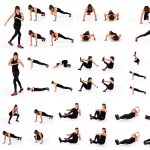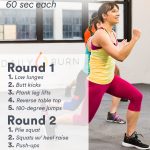Are you ready to challenge your body in ways you never thought possible? Imagine unlocking a new level of strength, balance, and endurance without ever stepping foot inside a gym.
The hardest bodyweight exercises push your limits, sculpt your physique, and boost your confidence. You don’t need fancy equipment or expensive memberships—just your own determination and the will to succeed. You’ll discover the most challenging exercises that will transform your workout routine.
Are you up for the challenge? Dive in and find out how these exercises can redefine what you think your body is capable of achieving.
Essentials Of Bodyweight Training
Bodyweight training is a versatile fitness method. It requires no equipment and can be done anywhere. This makes it accessible to everyone, from beginners to advanced athletes. Understanding the essentials of bodyweight training helps maximize results. It builds strength, improves balance, and enhances flexibility. The hardest exercises challenge the body and mind. They require focus, determination, and consistency. Mastering these essentials prepares you for the toughest workouts. Let’s explore the key components of bodyweight training.
Understanding Body Mechanics
Body mechanics play a vital role in exercises. Proper form prevents injuries and improves efficiency. Start with basic movements, like push-ups and squats. Focus on alignment and posture. This builds a strong foundation. As you progress, integrate complex movements. This enhances coordination and control. Remember, quality trumps quantity. Prioritize form over reps.
Core Stability And Control
Core stability is crucial for bodyweight training. A strong core supports all movements. It improves balance and posture. Engage your core during every exercise. This enhances performance and prevents strain. Planks and hollow holds are excellent for core development. These exercises target multiple muscle groups. They build endurance and strength.
Progression Techniques
Progression is key to advancing in bodyweight training. Gradually increase difficulty to avoid plateaus. Modify exercises to challenge yourself. Add variations or increase intensity. Incorporate explosive movements for added strength. Track progress and set goals. This keeps motivation high. Progression ensures continuous improvement.
Consistency And Discipline
Consistency is essential for results. Regular workouts build strength and skill. Discipline maintains focus and dedication. Set a routine and stick to it. Make fitness a habit, not a chore. Celebrate small victories to stay motivated. Consistency and discipline lead to success.
Benefits Of Bodyweight Exercises
Bodyweight exercises boost strength and flexibility without needing equipment. Mastering challenging moves like pistol squats or handstand push-ups builds core stability and enhances coordination. These exercises use your body as resistance, offering a versatile workout anytime, anywhere.
Bodyweight exercises are a fantastic way to build strength and flexibility without the need for any equipment. They are accessible to everyone, regardless of fitness level, and can be done anywhere, from your living room to the park. Beyond convenience, these exercises offer a myriad of benefits that can transform your fitness journey.Enhanced Muscle Strength And Tone
Bodyweight exercises engage multiple muscle groups simultaneously. This not only enhances muscle strength but also improves muscle tone over time. Take push-ups, for example. They not only work your chest but also engage your core and arms. You notice more definition as you progress, and your strength increases. Have you tried a one-arm push-up? It’s a challenging progression that tests your balance and strength.Improved Flexibility And Mobility
Incorporating exercises like squats and lunges can significantly improve your flexibility and mobility. You might find that your range of motion increases, making daily activities easier. This newfound flexibility can also reduce the risk of injury, keeping you active and healthy. When was the last time you tried a deep squat? It’s a simple move with powerful benefits.Boosted Cardiovascular Health
High-intensity bodyweight workouts can give your heart a great workout. Exercises such as burpees and jumping jacks get your heart rate up, improving cardiovascular endurance. You might feel breathless at first, but over time, your stamina will increase. What about trying a set of burpees and feeling your heart pound with energy?Weight Management
Bodyweight exercises can help you manage your weight effectively. They burn calories and build muscle, which increases your metabolism. Engaging in a routine regularly helps you achieve and maintain your desired weight. Have you experienced the difference in how your clothes fit after sticking to a consistent bodyweight workout routine?Cost-effective And Accessible
There’s no need to invest in gym memberships or expensive equipment. You can perform bodyweight exercises anywhere, making them an affordable fitness solution. Whether you’re at home or traveling, your workout goes with you. Have you ever tried a workout in a new location and felt the invigorating change of scenery?Scalable For All Fitness Levels
Bodyweight exercises cater to all fitness levels. Beginners can start with modified versions, while advanced athletes can challenge themselves with harder variations. This adaptability ensures that everyone can benefit. Have you ever considered how you can challenge yourself further with a simple exercise modification? Engaging in bodyweight exercises offers numerous benefits that go beyond physical health. They empower you to stay active, healthy, and confident. So, how will you incorporate these exercises into your routine today?Preparing For Advanced Moves
Preparing for advanced moves requires strength and control. Hardest bodyweight exercises challenge muscle endurance and mental focus. Building up to these demands practice and patience.
Preparing to tackle the hardest bodyweight exercises can be both exciting and intimidating. You’ve probably seen incredible feats like planches and one-arm pull-ups and wondered how to get there. It’s all about preparation, commitment, and understanding your body’s needs.Building A Strong Foundation
Before diving into advanced moves, it’s crucial to build a robust foundation. Start with basic exercises like push-ups, squats, and planks. These might sound simple, but mastering them ensures your body is ready for more challenging feats. Consistency is key. Doing these exercises regularly helps strengthen your muscles and improve endurance. Remember, even the toughest athletes started with the basics. You might be tempted to rush, but patience is your friend. Gradual progress helps prevent injuries and builds confidence. Have you ever tried holding a plank for a minute longer than usual? Little wins like this pave the way for bigger achievements.Importance Of Flexibility And Mobility
Flexibility and mobility are often overlooked yet vital aspects of preparing for advanced moves. Being flexible allows your muscles to stretch, reducing strain and risk of injury. Imagine trying a handstand with tight shoulders – not fun, right? Incorporate dynamic stretching into your routine. Moves like leg swings and arm circles enhance mobility. They prepare your joints and muscles for the complex movements involved in advanced bodyweight exercises. Balance is crucial, too. Yoga and pilates can improve your flexibility and stability, making challenging exercises more attainable. Have you ever noticed how smoothly you can transition between exercises when your body is limber? Flexibility isn’t just for dancers; it’s your secret weapon in mastering tough moves.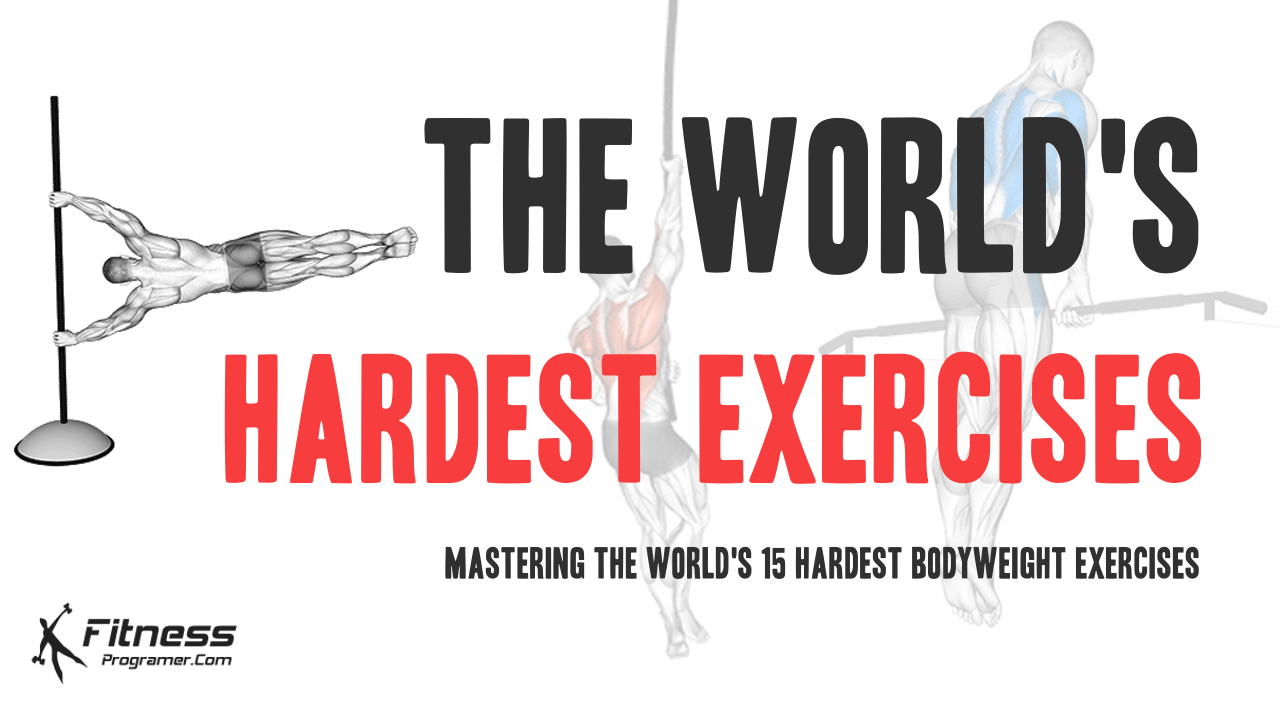
Credit: fitnessprogramer.com
Planche Mastery
The planche is a challenging bodyweight move. It requires strength, balance, and flexibility. Mastering the planche can take time. Patience and practice are key to success. This exercise is admired by gymnasts and fitness enthusiasts alike.
Progression Steps
Start with the tuck planche. It helps build core and arm strength. Keep your knees close to your chest. Use parallettes or a flat surface. Hold the position for a few seconds.
Move to the advanced tuck planche. Extend your knees slightly while maintaining balance. Build your shoulder and wrist strength. Practice regularly to hold longer. Increase your hold time gradually.
Next, try the straddle planche. Spread your legs wide while supporting your body. It challenges your balance and shoulder muscles. Hold the position for short bursts. Consistent practice helps improve hold time.
Finally, aim for the full planche. Keep your body straight and parallel to the ground. Engage your core and shoulders. Maintain a steady balance. This step requires dedication and strength.
Common Mistakes To Avoid
Do not rush the progression. It leads to injuries and setbacks. Focus on form and technique. Building strength takes time. Avoid skipping steps in your training.
Avoid holding your breath. Breathing helps maintain focus and energy. Ensure a steady and controlled breath. It stabilizes your core and muscles.
Keep your wrists aligned. Improper wrist position can cause strain. Use wrist supports if needed. Practice wrist flexibility exercises regularly.
Neglecting core engagement is common. Your core supports balance and control. Tighten your abdominal muscles during practice. It ensures stability and strength.
Practice these exercises safely. Consult a fitness trainer for guidance. They can provide helpful tips and support.
The One-arm Pull-up
The one-arm pull-up is a true test of strength. It challenges the body and mind. This exercise is a pinnacle of upper body strength. Mastering it is no easy feat. It demands exceptional grip and back strength. Many aspire to achieve this impressive move. But few succeed without dedication and practice. Let’s explore how to build the strength needed.
Developing Grip Strength
Grip strength is crucial for a one-arm pull-up. Strong fingers and forearms are essential. Start with simple exercises. Practice hanging from a bar with one hand. Use a towel for added difficulty. Squeeze stress balls or grippers daily. Wrist curls with light weights help too. Over time, your grip will improve. This foundation is key to progress.
Progression Techniques
Progression is vital in achieving a one-arm pull-up. Begin with assisted pull-ups. Use resistance bands or a partner. Gradually reduce assistance as you grow stronger. Negative pull-ups are effective too. Slowly lower yourself from the top position. This builds strength and control. Practice one-arm hangs for endurance. Transition to uneven pull-ups next. Hold the bar with one hand and a lower grip with the other. These steps will guide you toward success.
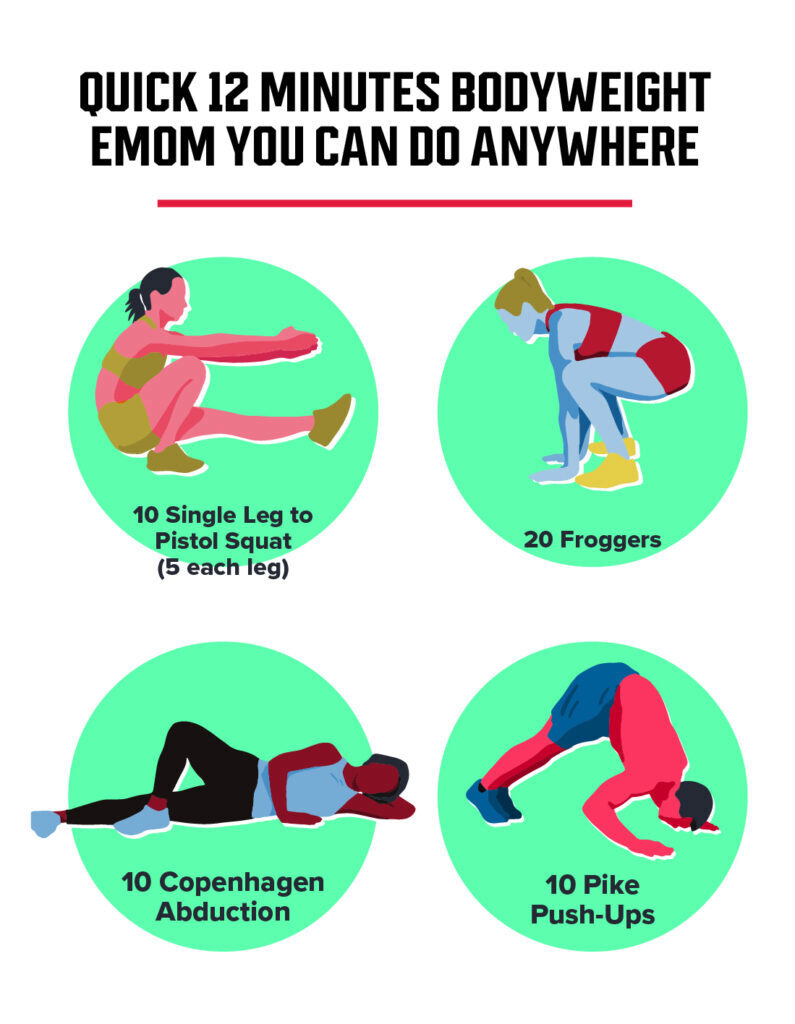
Credit: www.garagegymreviews.com
Front Lever Techniques
The front lever is a challenging bodyweight exercise. It demands core strength and balance. Mastering the front lever can boost your fitness level. The technique involves suspending your body horizontally. Your core muscles play a crucial role in maintaining this position.
Core Engagement Strategies
Strong core muscles are essential for the front lever. Engage your abs to stabilize your body. Tighten your glutes and lower back muscles. This creates a solid foundation for your posture. Practice plank variations to improve core strength.
Use leg raises to further develop your core. Keep your movements slow and controlled. Consistent practice helps build endurance. Breathing is also crucial. Inhale deeply and exhale as you hold the lever.
Maintaining Proper Form
Proper form prevents injuries and enhances performance. Start with a tucked position to gain balance. Gradually extend your legs as strength improves. Keep your body straight and aligned.
Focus on shoulder stability. Avoid shrugging or rounding your shoulders. Engage your lats and keep your chest open. This helps maintain a flat body line. Consistent practice is key to perfecting form.
Mastering The Human Flag
The Human Flag is a show-stopping move. It looks incredible. Mastering it takes dedication and strength. This bodyweight exercise challenges every muscle. It requires balance and control. Many fitness enthusiasts aim to achieve it. But it’s not easy. Understanding its demands helps in mastering it.
Upper Body Strength Requirements
Strong shoulders are essential. They stabilize your body. Grip strength is vital too. Your hands hold the pole tightly. A firm grip prevents slipping. Core muscles play a big role. They keep your body straight. Practice planks for a stronger core. They build endurance. Train your arms regularly. Try push-ups and pull-ups. These exercises develop arm strength. Chest muscles also assist. They provide extra support. Focus on these areas for success.
Balancing And Control Tips
Balance is key in the Human Flag. Start with basic moves. Side planks help gain balance. They teach body control. Practice regularly to improve. Keep your body tight. Avoid loose movements. Control your breathing too. It helps maintain balance. Slow breaths calm your body. Use your eyes wisely. Focus on a point ahead. This aids concentration. It reduces sway. Consistent practice builds confidence. Over time, balance improves.
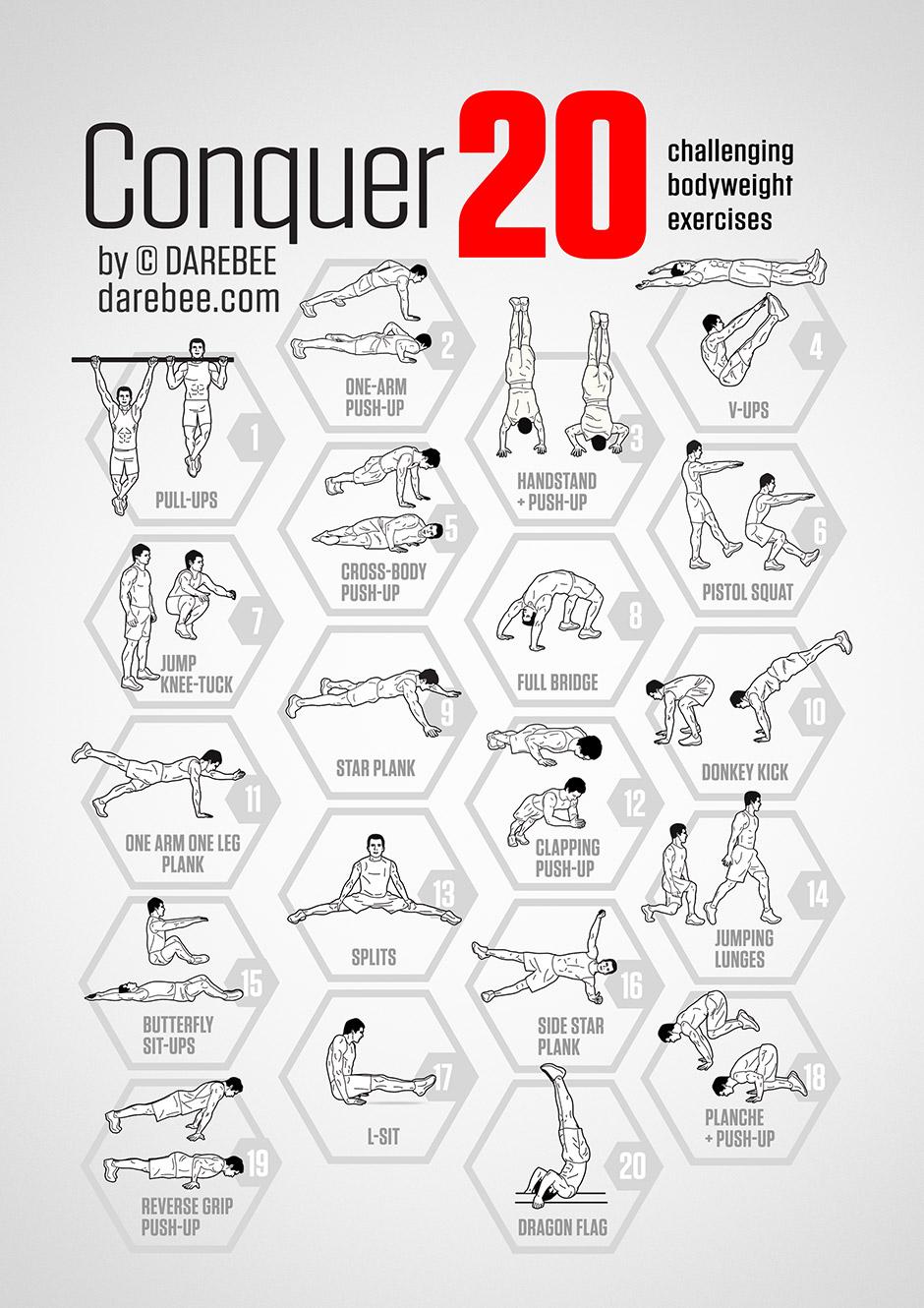
Credit: x.com
Handstand Push-ups
Handstand push-ups are a challenging bodyweight exercise. They test strength and balance. This exercise targets the shoulders, triceps, and core. Performing a handstand push-up requires practice and focus. It is not for beginners, but with dedication, anyone can learn.
Building Balance And Control
Balance is key in handstand push-ups. Start by mastering the handstand. Practice against a wall for stability. Focus on holding the position steady. This builds control over your body. As you gain confidence, try freestanding handstands. This improves balance further.
Control is crucial in this exercise. Lower your body slowly. Maintain steady breathing and keep your core tight. This ensures a smooth motion. Consistent practice sharpens your control skills. Over time, your balance and control will improve significantly.
Shoulder Strength Development
Handstand push-ups build shoulder strength. The shoulders support your body weight. Pushing up from a handstand targets them directly. Strong shoulders prevent injuries and improve posture. Start with assisted push-ups against a wall. Gradually move to freestanding versions.
Incorporate other exercises to boost shoulder strength. Push-ups and planks are helpful. Consistent training leads to stronger shoulders. Handstand push-ups become easier with time. Your shoulder strength will develop as you progress.
Pistol Squats
Pistol squats are the ultimate test of strength, balance, and flexibility. This single-leg squat demands more than just powerful legs. It challenges your entire body’s coordination and control. If you’re looking to push your boundaries, mastering pistol squats will definitely up your fitness game.
Enhancing Leg Strength
Building leg strength is key to performing pistol squats effectively. These squats engage your quadriceps, hamstrings, and calves intensely. Unlike traditional squats, pistol squats force each leg to work independently, leading to balanced muscle development.
Feeling the burn after a set of pistol squats is not uncommon. This exercise recruits more muscle fibers, making your legs stronger and more resilient. Adding these to your routine can be a game changer for boosting your lower body power.
Improving Balance And Flexibility
Pistol squats are not just about strength; they require exceptional balance and flexibility. You need to maintain control while lowering your body on one leg, keeping the other leg extended forward. This involves engaging your core and focusing on stability.
Imagine the precision needed when your body is balancing on one leg. It’s like walking a tightrope. Practicing pistol squats can enhance your proprioception, helping you become more aware of your body’s position in space. It’s a skill that translates well into everyday activities.
Flexibility plays a big role here too. Your ankle, hip, and knee joints must be agile enough to reach the full range of motion. Stretching regularly can help improve this flexibility, making the exercise more manageable over time.
Have you ever wondered how athletes achieve such grace and control in their movements? Pistol squats are part of the secret. By challenging your balance and flexibility, they prepare you for a variety of physical feats. So, are you ready to take on the challenge?
Tips For Consistent Progress
Bodyweight exercises challenge your strength and endurance. Consistent progress keeps you motivated. Knowing how to advance helps you stay on track. Let’s explore some useful tips.
Setting Realistic Goals
Start with achievable goals. Consider your current strength and fitness level. Setting high goals can lead to disappointment. Begin with exercises you can handle. Gradually increase difficulty over time. Adjust your goals as you improve.
Focus on form and technique. Proper form prevents injuries. It also ensures effective workouts. Quality over quantity should be your mantra. This approach leads to sustainable progress.
Tracking Your Progress
Monitoring your progress is essential. Keep a workout journal. Record your exercises, reps, and sets. Note any challenges you face. This helps identify areas for improvement.
Regular assessments offer insights into your progress. Review your journal weekly. Celebrate small victories. Adjust your routine based on your findings. Staying aware of your journey fuels motivation.
Use apps or fitness trackers if possible. They provide visual progress reports. This makes tracking easier and more engaging.
Frequently Asked Questions
What Are The Toughest Bodyweight Exercises?
The toughest bodyweight exercises challenge strength and endurance. They include one-arm push-ups, pistol squats, and muscle-ups. These exercises require excellent control and mastery. They target multiple muscle groups, enhancing overall fitness. Consistent practice and proper technique are crucial for safety and effectiveness.
How Do Bodyweight Exercises Build Strength?
Bodyweight exercises build strength by using your body as resistance. They engage multiple muscle groups simultaneously. This enhances functional strength and improves balance. Consistent practice increases muscle endurance and power. Focus on controlled movements for maximum benefits.
Can Beginners Try Difficult Bodyweight Exercises?
Beginners should start with easier variations and progress gradually. Proper technique is crucial to avoid injury. Building foundational strength is important before attempting advanced moves. Consistent practice and patience are key to mastering difficult exercises. Seek guidance to ensure safety.
Are Bodyweight Exercises Effective For Muscle Growth?
Bodyweight exercises can be effective for muscle growth. They require high intensity and progressive overload. Incorporating variations enhances muscle engagement. Proper form and consistency are essential for results. Combining them with a balanced diet aids muscle development.
Conclusion
Bodyweight exercises challenge strength and flexibility. They require no equipment. Perfect for home workouts. Mastery takes patience and practice. Start with easier moves. Progress steadily. Push-ups and planks build core strength. Squats enhance lower body power. Handstands test balance and control.
Each exercise offers unique benefits. Mix them in your routine. Keep challenging yourself. Listen to your body. Rest is crucial for recovery. Consistency is key to improvement. Enjoy the journey to fitness. Stay committed. Fitness is a lifelong adventure. Adapt and grow with each workout.
Keep moving forward.




